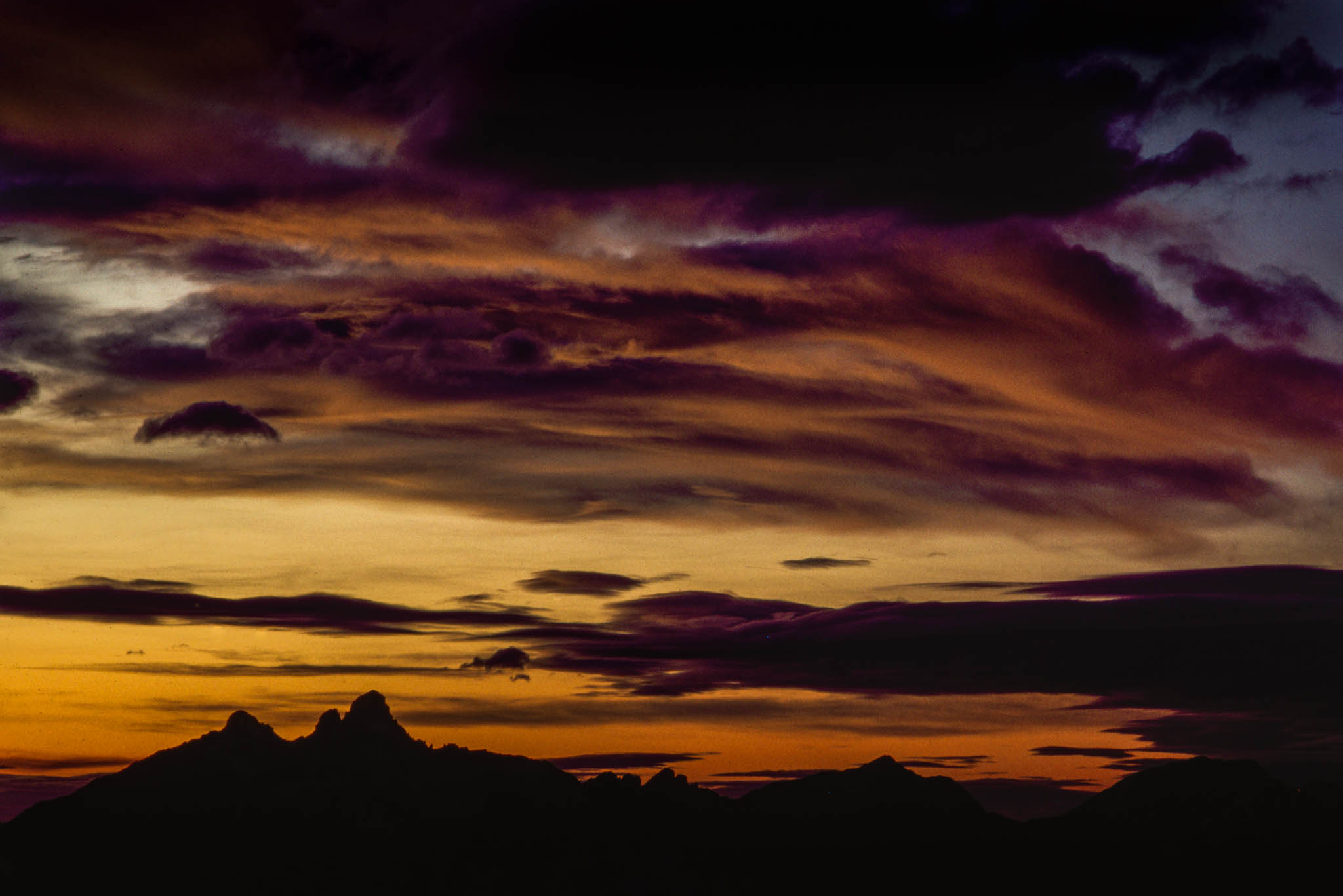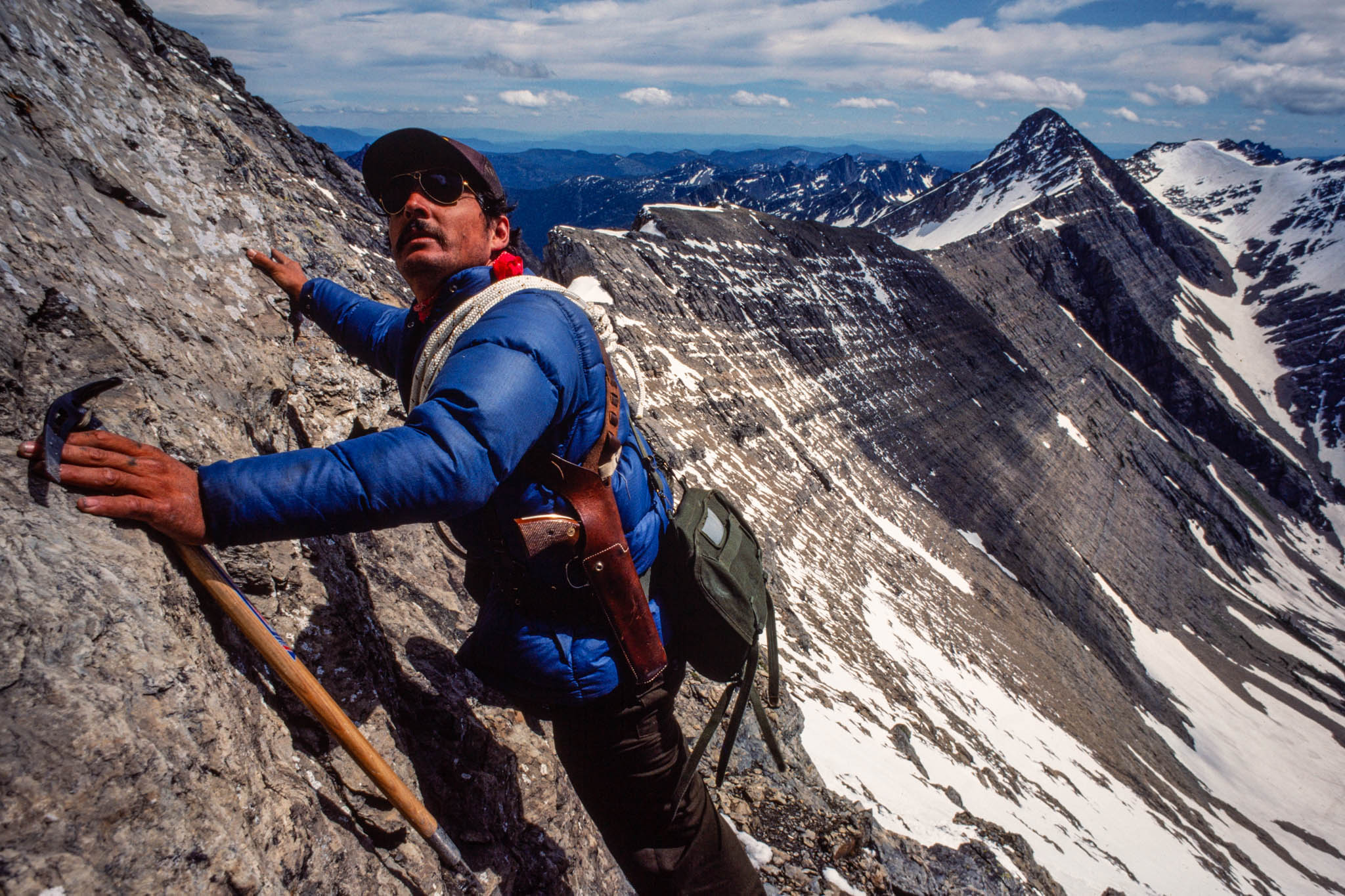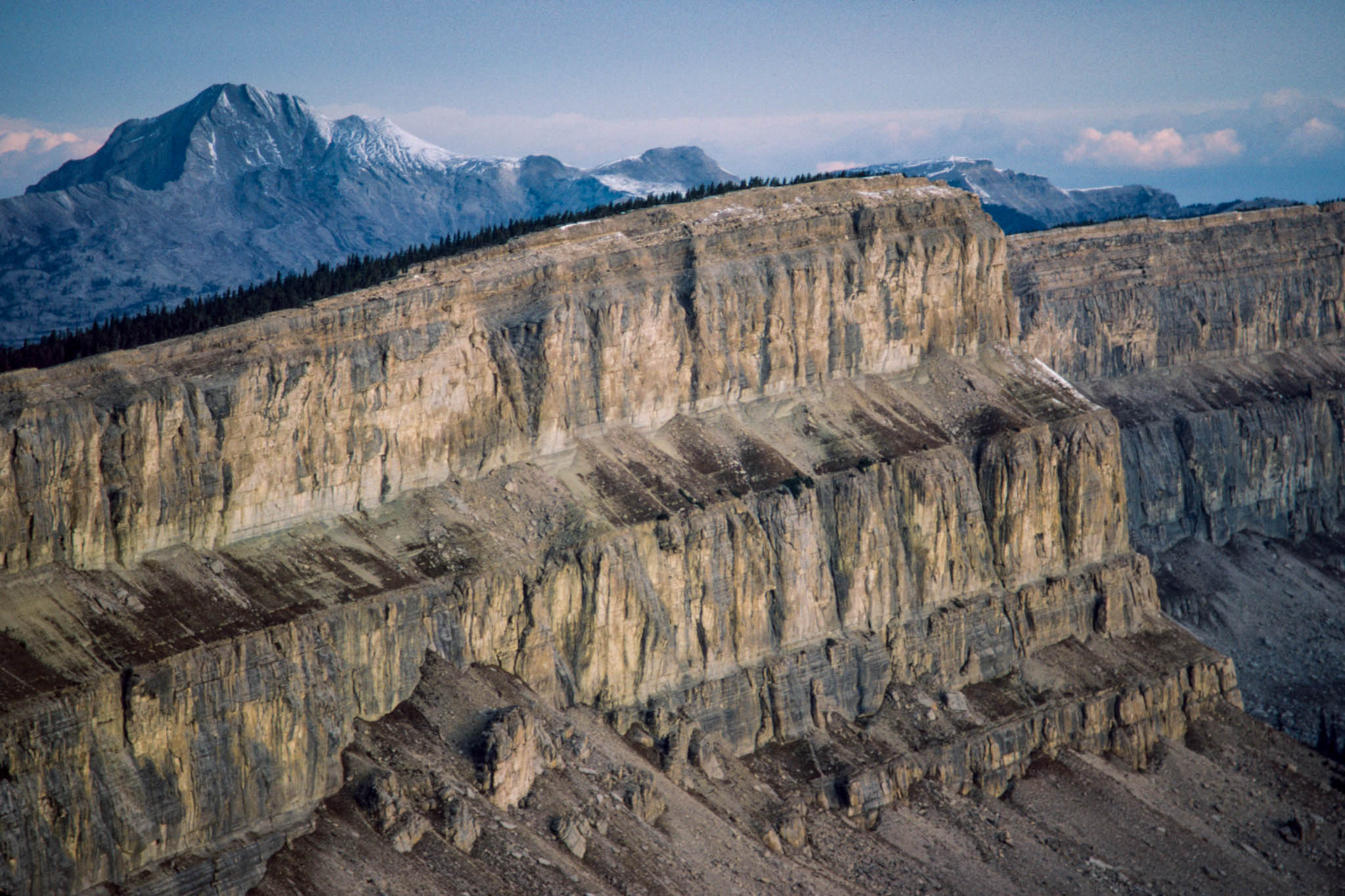Post test
A source of inspiration and awe, wilderness is a force that shapes the lives of all Montanans

Montana, one of the last frontiers in America, is a place where vast expanses of land remain relatively untouched by more than a century of growth and development. Towering mountains guard pockets of wilderness that have never been fully explored. Rolling prairies hold traces of bison and the Indians who once roamed free. Even the state’s largest cities are built near the edge of wild territory where people and grizzly bears share narrow forest trails.
Wilderness is the heart of Montana. The state contains more than 3.4 million acres of congressionally designated wilderness areas and millions of additional acres of equally wild country. With a total population of 818,000-about one-half the number of people living in the city of Philadelphia-Montana has nearly 4 acres of wilderness for every man, woman, and child in the state. The Big Sky Country has roughly 14 percent of the 23 million acres of wilderness in the continental United States. Only neighboring Idaho, with 3.9 million acres, and distant Alaska, with 56 million acres, have more wilderness.
At one time, any tract of undeveloped land could be described as wilderness. Passage of the Wilderness Act of 1964 changed the term to mean a specific area set aside by Congress for preservation in its natural state. Increasingly, wilderness is becoming a word almost synonymous with conflict. Loggers are fighting for the wilderness timber they need to supply their sawmills, and miners are struggling to keep the areas open for mineral exploration. Environmentalists.are battling to save some of the last remaining wild country in America for future generations. “We’re fighting for the last scraps,” says environmental activist Joan Montagne of Bozeman.
Changing times have brought increasing pressures to bear on the state’s wild lands. Natural resources are becoming more valuable, and the number of people competing for them increases daily. Bulldozers and chainsaws are threatening even the most remote and pristine corners of the state. But until the competition for wilderness is settled, Montana’s major industries must struggle through tough economic times while many of the natural resources they need are held in limbo.
Wilderness is an economic issue that affects to some degree the pocketbooks of all Montanans. Valuable natural resources allocated to wilderness cannot be used to make lumber. Mountains that are managed to preserve natural qualities cannot accommodate ski areas or resorts. Wilderness locks away, theoretically forever, the natural gas or oil that might be found deep underground. In a developing region where the economy is fueled largely by the wood products and mining industries, where jobs are often scarce, and where people have a long tradition of exploiting natural resources, the arguments against wilderness can be compelling.
“Large numbers of the people who belong to the environmental groups that advocate wilderness do not depend on natural resources to make a living, as we do in Montana,” says Gary Langley of the Montana Mining Association.
Yet wilderness has an economic value of its own as an attraction for tourists and recreationists. It is hard to say how much of the state’s $300 million tourist business stems from wilderness, but many of the people who visit Montana each year come to see the unspoiled natural beauty, the wide-open spaces, and the plentiful wildlife found in its wildest places. It is relatively easy to count the board feet of timber in a forest and to calculate its value as two-by-four lumber. Figuring the monetary value of the same area as wilderness is much more difficult, making dollar-for-dollar comparisons impossible.
Wilderness is not simply a matter of money. It’s a moral issue, too. It represents the long-overdue recognition that humans do not have the right to disrupt every last acre of earth. Wilderness preservation is a means of making sure that at least some of nature’s beauty survives. Someone once asked pioneering conservationist Bob Marshall how much wilderness does America really needs. “How many Brahms symphonies do we really need?” Marshall asked in reply.
To people deeply involved in the preservation movement, discussions about wilderness economics seem absurd. Gaylord Nelson, chairman of the Wilderness Society, tries to imagine wilderness philosophers like Marshall and Aldo Leopold talking about the value of untrammeled territory. “Marshall and Leopold probably wouldn’t have spent five minutes arguing the economics of wilderness,” he says. “There’s just a sense that some of nature’s work ought to be preserved.”
Wildland preservation raises scientifac and social questions as well. For example, do we need areas controlled by natural processes against which to measure the changes of civilization? And how can the public gain the most benefit from its lands?
People are not the only ones affected by wilderness preservation. Some species of wildlife cannot live in close association with humans. Animals and birds like the grizzly bear, Rocky Mountain wolf, and the trumpeter swan need large expanses of wild country in which to live.
Simply defining wilderness often becomes a matter of dispute. Should wilderness be only the highest rock-and-ice summits of mountains, or should it include a wide range of areas representing every ecosystem in the country?
The clash of economics, moral, and other questions makes the wilderness issue a difficult one to settle. Myths and misunderstandings further confuse matters. Wilderness sometimes is characterized as a playground for the wealthy, the elite, and the out-of-state tourists. People opposed to wilderness preservation complain that it upsets the multiple-use philosophy under which most public lands are managed. Environmentalists, mistrustful of commodity-oriented government agencies, contend that wilderness restrictions are the only means of protecting fragile lands.
In fact, the state’s wilderness users comprise a broad cross section of people, most of whom live in Montana. Wilderness is a form of multiple use: it prohibits logging, mining, and motorized vehicle use but protects the land for wildlife, water quality, scientific research, and recreation.
And the Wilderness Act is only one of several laws designed to preserve public lands.
Perhaps the most common misconception is that once an area is designated as wilderness, its future is secure. Examples found through out Montana’s wilderness areas prove that designation is just the first step toward preservation. Wilderness is a resource that requires thoughtful management to prevent its accidental destruction.
Wilderness is an important part of life for Montanans. Their wild surroundings, visible from their homes, ranches, and highways, are a source of inspiration and”awe. Those who enter the wilderness find that the complexities of workaday life seem to fade, and simple things take on greater importance. Few people can traverse a canyon carved by ancient glaciers or contemplate the earthly power needed to build the Rocky Mountains without gaining a truer perspective on their own lives. “You get to thinking that you’re pretty important,” says wilderness ranger Mac Brandon of Red Lodge. “Then you look at a place like this, and you know you’re not.”
Regardless of whether they value it as a place of untapped opportunity or as a rare sample of purity spared from the forces of progress, wilderness shapes the lives and livelihoods of all who live in the nation’s fourth-largest state. ”Montanans have a visceral understanding that our last, best wild places are not only our weather makers, watersheds, and home for the great creatures of the continent, but they also are part of each Montanan individually,” Congressman Pat Williams says.
It is not just the presence of wilderness, but what it does to people that sets Montana apart from most of America, says Daniel Kemmis, speaker of the state House of Representatives. In an insightful 1983 essay on Montana values and politics, Kemmis recognizes the lure of the wilds as the reason most people make the state their home: “If you ask people-especially those who clearly remember their arrival here-why they are here and not somewhere else, you hear time and again the story of feeling crowded, oppressed, and alienated elsewhere, the need to be able to get into the open country, to experience its power, to identify oneself in relation to that kind of open land.”
Gov. Ted Schwinden says that securing a reasonable amount of wilderness is essential to preserving Montanans’ way of life. ”Those resources, once lost, are captured only in prose, art, photographs, or memory,” he says.
“Some of us who live here don’t appreciate what we have here,” Schwinden adds. He recalls a conversation with an out-of-state newspaper reporter visiting Montana for the first time who said, “I didn’t believe there were places like this left in the world.”
Never has it been more important for people to discover Montana’s wilderness heritage. Decisions made in the coming years will partly determine how much of Montana’s frontier character survives. The allocation and protection of wilderness resources will help set the pace for economic development for generations to come. All Montanans, all Americans will have a stake in the issue and a voice in its outcome.
People who explore the resources and issues of existing wilderness areas will find it easier to make informed decisions about these and other wild lands. This book is a beginning in the search for answers and understanding about Montana’s wilderness.
The following pages offer a journey through the state’s 15 designated wilderness areas. Each chapter has a different theme focusing on a specific wilderness issue. The issues range from economics to wildlife, from what constitutes wilderness to how best to manage it. Every area is unique, but the issues affecting each are common to all wildernesses. The chapters are like pieces of a puzzle that fit together to provide a portrait of one of Montana’s most precious resources.




